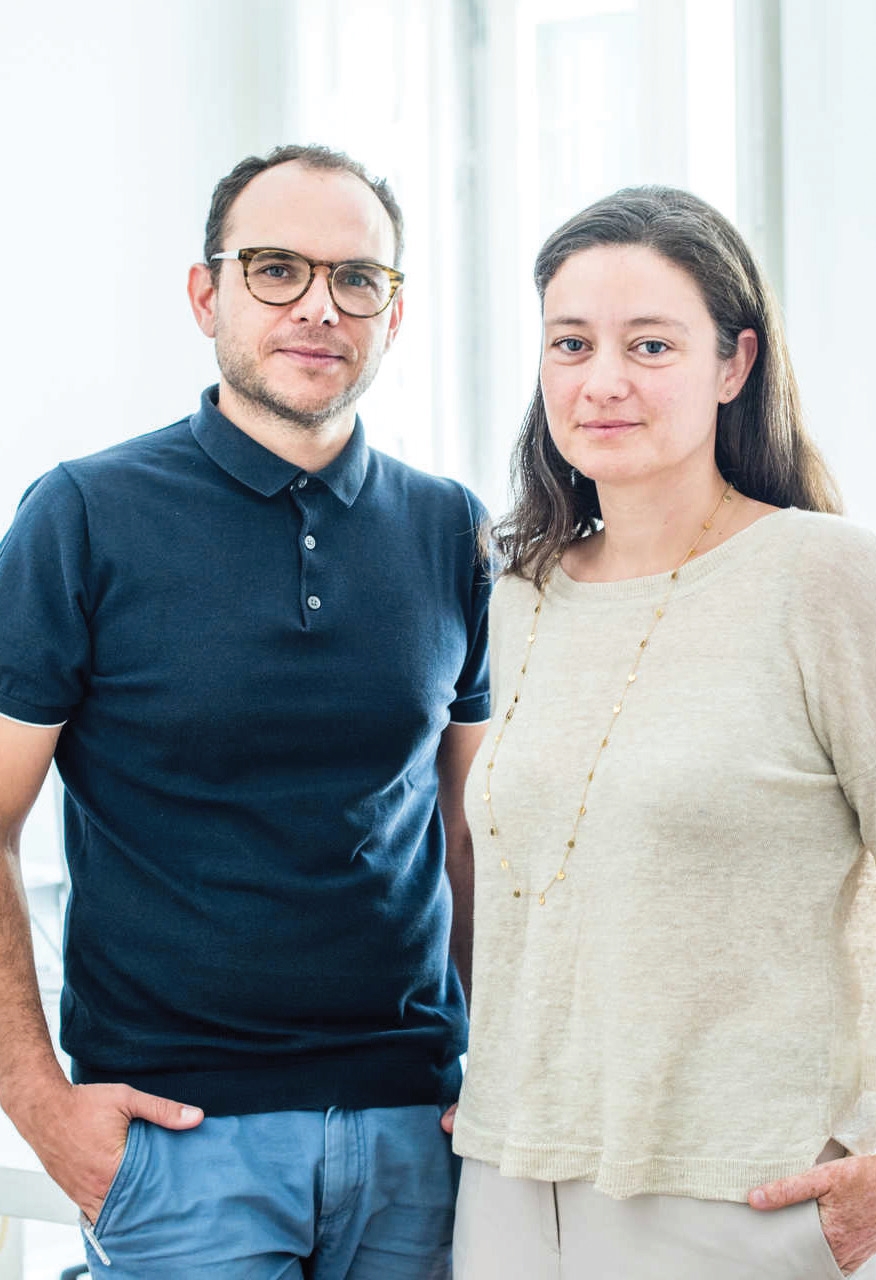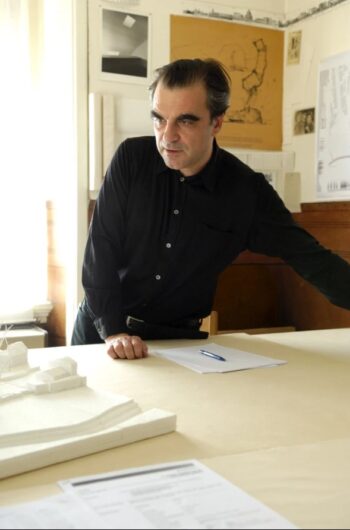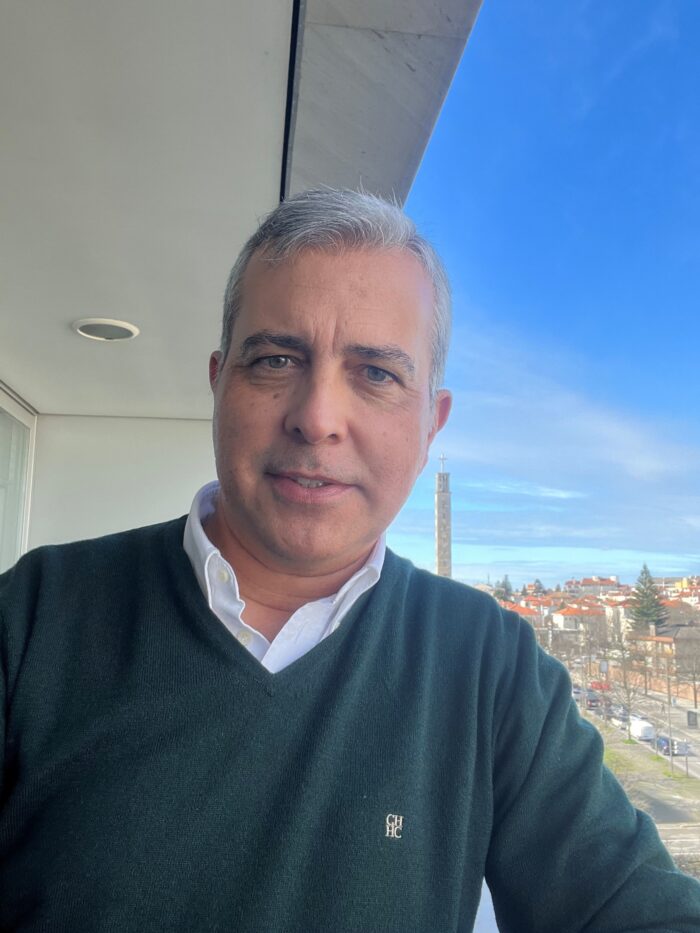A conversation with SAMI Architects

A conversation with SAMI Architects
Inês Vieira da Silva and Miguel Vieira form SAMI architects. They received us in a fluid and lively conversation, much more than an interview, with the presence of Miguel Villar.
Inês Sousa (I) – We are a small scale studio, centered on the office, which we like. It is like a job, we pay attention to things and have a great sense of responsibility. The landscape, the territory, people’s lives, everything changes with our work and we have the humility to realize that there is a long term in what we do. In each project, we try to know as much as possible the reality in which we will intervene. And when we are developing a project we make sure that it can be built.
Miguel Vieira (M) – This is a cross-cutting issue. I remember that in the first project, the Visitors Center of Gruta das Torres, in Pico Island, the concern was to make things happen, we even called the Diário da República to know the day when the tender was launched, to make sure there were contractors and nothing would stop the work from being carried out.
I – Pico shaped the way we work. The scarcity of resources and isolation could not prevent us from working as we do in Lisbon. We looked for available solutions. Between 2002 and 2004 we were part of the team that won the candidacy for the Protected Landscape of the Pico Island Vineyard as a World Heritage Site. We worked with a number of subjects and the most interesting thing was explaining to the population what an architect is. It was a great learning experience. After Pico, came the crisis and budgetary constraints. We built the office in a context of few resources, with adequacy, pragmatism and consistency.
M – At a conference in Spain, someone said that “architecture is between poetry and prison”. It is a double dimension that it is up to the architect to master, because he knows that there are regulations and his decisions have impacts, but at the same time he is asked for the poetic side, which goes beyond the technical and structural. We have to feel that there is something there that captivates us.
Miguel Villar (MV) – Or that frees us. Architecture has that a lot, we are making a closed space, tied to strict regulations and in the end, after the work is done, there is a sense of freedom.
M – The difficult thing is to get the ideal conditions, nowadays the time we have to do things is limited. Being able to coordinate, almost like conductors or jugglers, all the specialties that are growing, and to make decisions that encompass everything, can only be achieved with time. This is the great battle.
MV – Even because there are no instant ideas, if we are asked for a building or a square to last two hundred years, they cannot demand it to be done in two weeks.
M – And there are no previous ideas, I don’t care about having ideas in a notebook waiting for a project to fit them. We have always done things from the context, giving a lot of importance to what the client wants and to his concerns. Involving the client in the project increases the chances that it will go forward and, not always being true, it increases the possibility of the buildings not being transformed after they are completed, because they were thought of with several concerns.
I – Another extremely important thing is the teams, and there are nuclear teams such as structures, air conditioning and water. Regarding structures, what is very interesting is that we were able to design even with Miguel Villar. There are solutions that come from the structures’ information. We have the greatest example at the handrail, a piece we made for Gulbenkian. It was intended to lead people to the floor -1 exhibition, so we thought of a handrail. As soon as we thought about the handrail, we thought about Eng. Miguel and how he would help us do it. That piece was made with six hands and is a very beautiful piece, that touches the sublime and that synthesizes the teamwork between architecture and engineering. I would say that our process is one of addition. We do not intend to have a very precise idea at the beginning and carry it to the end at all costs. Structures can give us pretexts to solve a particular space.
M – Fortunately, the engineering teams are our support, they share the involvement. Things only make sense in that consistency. The projects do not work by transmission: I do the architecture, the engineer comes and makes the structure … Each one builds his vision for the same purpose. It is up to the architect to make the decisions, but he relies on the engineer to decode things. And we hope to be able to prove, in this world where everything is required to be so fast, that it makes sense to design with time, for the benefit of quality and rigor. We were part of a group of 100 young architects invited to build a house in China and we realized that this happens everywhere, there is no El Dorado out there, everyone has problems. And we understand the respect that Portuguese architecture has internationally.
MV – And you built your own DNA in Setúbal. You didn’t choose Lisbon or Porto. If this is not internationalization within the country itself, I don’t know what it is…
M – Yes, we did not do it despite being in Setúbal, but because we are in Setúbal. In Lisbon, we would not be doing the way we do. We were at a conference in Porto, where some Spanish architects, who won the Mies van der Rohe, asked “how do you make clients do what you suggest?” And I replied, “Are you kidding? You’ve won Mies… ” This only gives us the desire to overcome ourselves and dominate more and more things.
This interview is part of Revista Artes & Letras # 102, from November 2018
Partially automatic translation from portuguese: some expressions may differ from their actual meaning.
News & Interviews
Betar is one of the members of the ‘Construction Foundation’
The Order of Engineers, the Order of Architects and the Order of Economists have joined 14 construction-related companies to create a foundation to respond to the sector's challenges. Read more
A conversation with Arch. José Neves
‘One of the few certainties I have about architecture is that we should only destroy or replace what we can do better.’ Read more
A conversation with Eng. Pedro Januário
'Digital transformation and the incorporation of artificial intelligence into our processes and decisions are already a reality, but I believe that, in the short term, they will be a determining factor in differentiation' Read more




